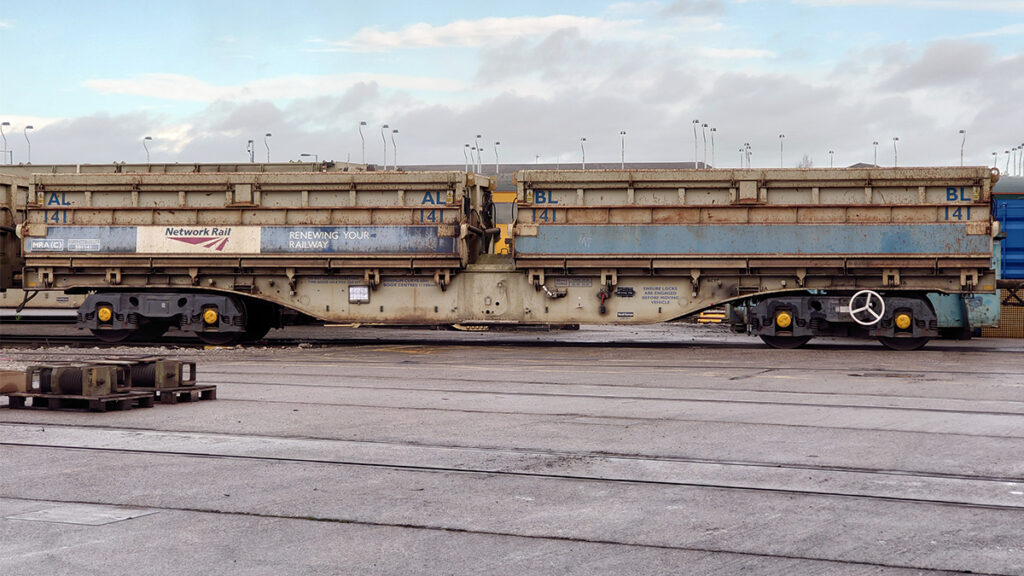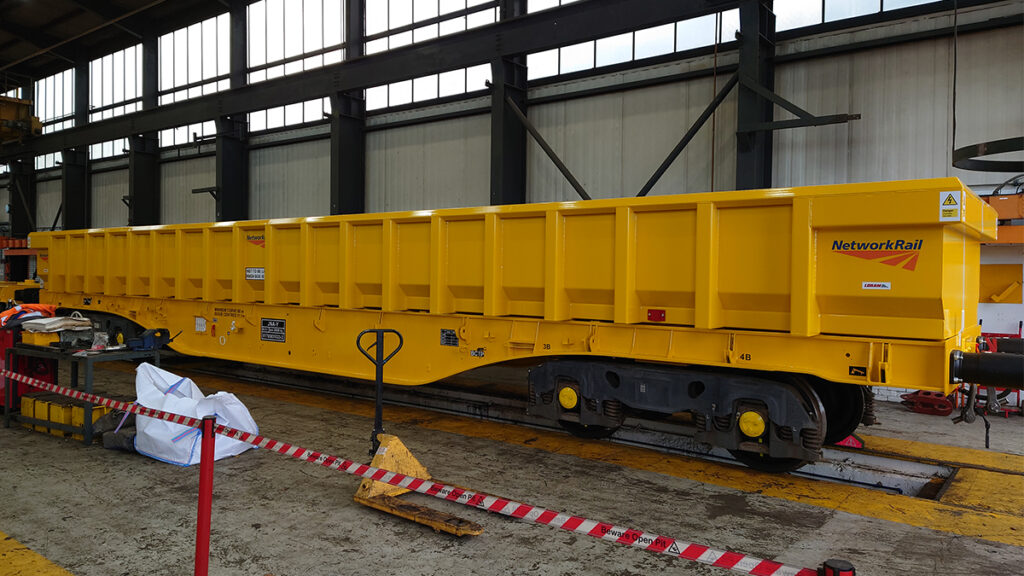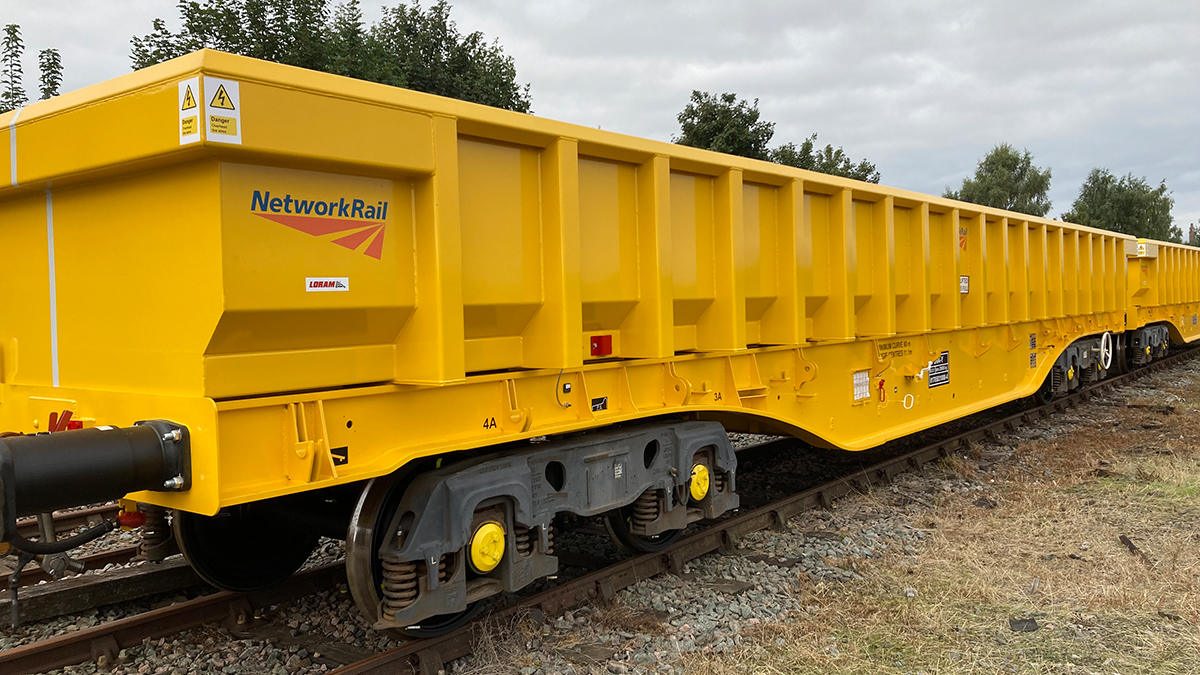We’re repurposing old wagons on our railway so we can use them once again.
It’s helping us build a more circular economy where we use products repeatedly and use less raw materials – giving you a greener railway.
An old model of wagons
We previously used hundreds of wagons on our railway that were a very specific model known as side-tippers. We used side-tippers to move and empty ballast – or the stones that support our track – around our railway.
But working in newer, more efficient ways mean we no longer use side-tippers – so we’ve found a new way to give them another use.

A new life
In late 2022 we started converting our old fleet of side-tippers into the current model of wagons used on Britain’s railway, called the box wagons.
We stripped the old wagons down to their frame and added a new casing on top that made them into box wagons.
The old side-tippers were previously at the end of their working life, but this process has added about 20 more years of use to them.
We also had a shortage of box wagons, so repurposing the side-tippers is more sustainable and efficient than making new wagons.
We’ve converted about 300 wagons so far. This has saved us about £4m a year that may we may otherwise have spent leasing more box wagons. We can now invest that money into other parts of the railway.
These repurposed wagons are used for small and big jobs every week. For example, we used several repurposed wagons during track renewals in the Severn Tunnel in July. We’re also planning to use them during the Christmas and New Year period to upgrade track near Westbury station in Wiltshire.

A greener railway
Repurposing the old wagons in this way has also saved about 6,000 tonnes of steel and almost 10,000 tonnes of carbon emissions.
This will help us achieve net zero by 2045 in Scotland and England 2050 by cutting carbon emissions across the railway.
We can minimise the number of raw materials we need to buy and reduce our carbon emissions by preventing waste. This will lead to a more efficient, greener and more sustainable railway for you.
Andy Key, an engineering manager at Network Rail, said: “Re-purposing something we already own and would otherwise go to waste is a great way to deal with the shortage of new wagons. The project has reaped lots of financial and environmental benefits that will no doubt benefit our passengers as well.”




